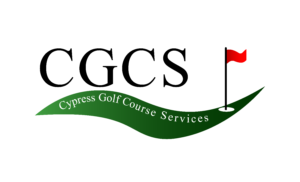
Surveys conducted* by the Golf Course Superintendents Association of America (GCSAA) reveal that labor accounts for 52 percent to 65 percent of a course operation’s total budget. The surveys only generalize the relative size of this budget line item but do not reveal the challenges of the tasks themselves: the course design requirements and the relative handwork necessary to achieve them. Typically, labor costs are the primary focus for immediate cost constrictions without consideration given to the ramifications of such reductions.
The only reliable method to determine the cost of labor is to examine the tasks required of the human capital employed to execute them, individually and dynamically. Employee productivity, time and motion studies, manpower estimates: they all refer to studying tasks and the cost of labor required to complete them.
The goal of these studies is to determine how many full-time employees (FTE) are necessary to complete all the tasks required to maintain the course objectives and benchmark standards. An FTE is defined as one person working 40 hours per week for 52 weeks for a total of 2,080 hours.
| Evaluated tasks: Actual hours | |||||||||||
| Task |
| Hours |
| Frequency |
| Per |
| Total Time per week |
| ||
|
|
|
|
|
|
|
|
|
|
|
|
|
| Task A |
| .75 |
| 2 |
| week |
|
| 2.25 |
|
|
| Task B |
| 1.25 |
| 1 |
| day |
|
| 8.75 |
|
|
| Task C |
| .5 |
| 1 |
| day |
|
| 3.5 |
|
|
| Task D |
| .75 |
| 2 |
| day |
|
| 10.5 |
|
|
| Task E |
| .5 |
| 3 |
| week |
|
| 1.5 |
|
|
| Task F |
| 32 |
| 5 |
| week |
|
| 160 |
|
|
| Task G |
| 16 |
| 8 |
| week |
|
| 128 |
|
|
| Task H |
| 7 |
| 12 |
| Day |
|
| 588 |
|
|
| Total hours per week |
|
|
|
|
|
|
|
| 902.5 |
|
|
| Total hours per year |
|
|
|
|
|
|
|
| 46,930 |
|
|
| FTE ( 2080) |
|
|
|
|
|
|
|
| 22.5625 |
|
|
When the total number of FTEs is defined for existing tasks, it should be compared to the proposed benchmarks to determine what efficiencies are lost or gained applying alternate maintenance practices and procedures. Labor costs are then assigned, per employee, to actual hours and required hours to determine where changes in the operation should be initiated and how those changes will affect labor cost projections.
As always, maintaining the benchmark standards is the focus of all labor cost evaluations. It is important to be cognizant of manpower reductions and changes that could have a long-term negative impact on the course conditions and playability. Staff required for each task or project is frequently misrepresented because the exact time requirements are estimated or unknown. Staff is often expected to do more, with fewer resources, or experiences idleness as a result of undefined expectations.
Labor cost is a significant portion of any club’s budget, and course maintenance accounts for the majority of that cost. Course maintenance is also the most visible and impactful for membership, both in terms of aesthetics and enjoyment. Additionally, what works for one club may not work for another, even clubs that are similar in geography or player demographics; no two clubs can compare or duplicate labor utilization and cost.
The principles at CGCS have the expertise to complete a proper labor analysis, having personally owned, operated, and managed course operations. We provide the solutions you need to manage maintenance operations as a business within your business. If you would like more information about this type of analysis, or any other service that will allow your club to run more efficiently and more profitably, call us at (813) 645-9111 or send an email from our contact page.



